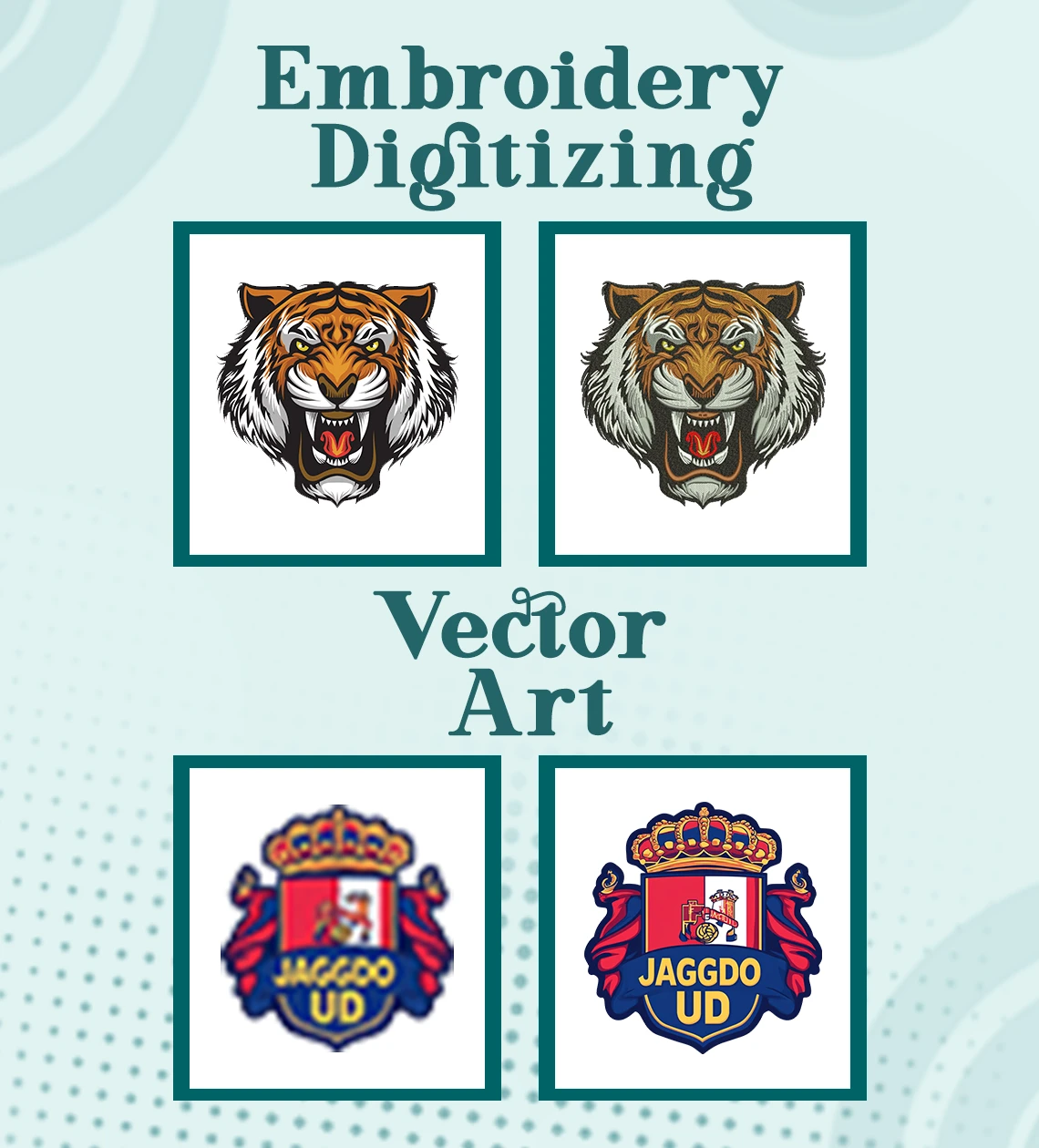
Creating an embroidered adhesive patch combines two crafts: embroidery and patch making. The key is balancing precision in your embroidery design and the creativity of adhesive backing.
Here’s a simplified step-by-step process:
Choose an embroidery design that meets your style. Platforms like True Digitizingoffer professional embroidery digitizing services to ensure your designs are perfectly created for stitching.
Transfer your chosen design to the fabric using embroidery software and a compatible machine. Make sure the thread colors match your design to ensure a professional look.
Secure the fabric in the embroidery hoop and begin stitching. Keep the tension consistent for even results. If you’re hand-embroidering, maintain a steady pace to achieve clean lines.
Once your design is complete, carefully cut around it, leaving a small margin for stability. Use sharp scissors for precise cuts.
Add adhesive backing to your patch. Whether you’re using heat-activated iron-on adhesive or peel-and-stick options, ensure it covers the entire backside for durability.
Here’s a quick checklist of materials you’ll need to make an embroidered adhesive patch:
Embroidery Machine or Hand-Embroidery Tools:
Embroidery Designs (digitized files for machine embroidery)
Fabric (felt or cotton works well for patches)
Embroidery Thread (choose high-quality threads for durability)
Adhesive Backing (iron-on adhesive sheets, double-sided tape, or peel-and-stick backing)
Scissors (sharp ones for clean cuts)
Iron (for heat-activated adhesive)
Attaching your embroidered patch to fabric seamlessly involves preparation and careful application:
Before applying the patch, make sure the surface is clean and dry. Adhesive sticks better to smooth, lint-free surfaces.
Lay your patch on the fabric, adhesive side down. Adjust its placement until you’re satisfied with how it looks.
If using iron-on adhesive, set a thin fabric over the patch and gently press it with a hot iron for 10-15 seconds. Press gently with your hands or a roller to apply peel-and-stick patches.
Let it cool for a minute, then test the edges to ensure the patch is fully adhered.
At True Digitizing, we offer quick turnaround times, guaranteed quality, and the option to preview your design before making a payment. We ensure you get exactly what you need. We are committed to delivering the best results every time. What are you waiting for? Contact True Digitizing today and experience the difference in quality and service.

Using adhesive backing is the secret to transforming embroidered designs into accessible patches. Here’s how to do it efficiently:
Cut the adhesive sheet to match the size of your patch. Avoid overhanging edges.
Peel the protective layer off one side of the adhesive and stick it to the back of the embroidered patch. Smooth out any air bubbles.
For iron-on adhesive, follow the heat activation process outlined earlier. If using peel-and-stick, ensure even pressure is applied across the patch.
Attaching adhesive patches is simple, but ensuring they last requires attention to detail:
Always clean the target surface before attaching the patch. Dust and oils can weaken the adhesive.
Different adhesives have unique application methods. Follow the guidelines for best results.
For extra durability, consider stitching the patch’s edges. This step is especially useful for garments that undergo frequent washing.
Nick William has been immersed in the world of embroidery digitizing for over 20 years, earning 25 industry awards throughout his career. As a 3rd generation embroidery expert, Nick’s journey started in his family’s workshop, where he learned the art of digitizing before the rise of modern software. He has worked with leading commercial embroidery businesses and has shared his expertise with over 75,000 home and professional embroiderers. As an author at True Digitizing, Nick is passionate about teaching others how to create beautiful, precise designs through easy-to-follow tutorials and expert advice.
Categories

6 Popular Types of Vector Files 2025
16-04-2025

How To Create A Vector File: Step-by-Step Guide
15-04-2025

What Is A Vector File? Everything You Need To Know
14-04-2025

Best Janome Embroidery Machines You Need to Check Out in 2025
11-04-2025

Custom Embroidery Digitized Designs For Hoodie Lovers
10-04-2025

Best Embroidery Patches For Your Clothes
10-04-2025

Professional Online Photo Digitizing Services Provided by True Digitizing
09-04-2025

Best Babylock Embroidery Machines For You
09-04-2025

Barudan Embroidery Machines: From Beginners to Professionals
04-04-2025

Custom Sweatshirt Embroidery Digitized Designs By True Digitizing
03-04-2025